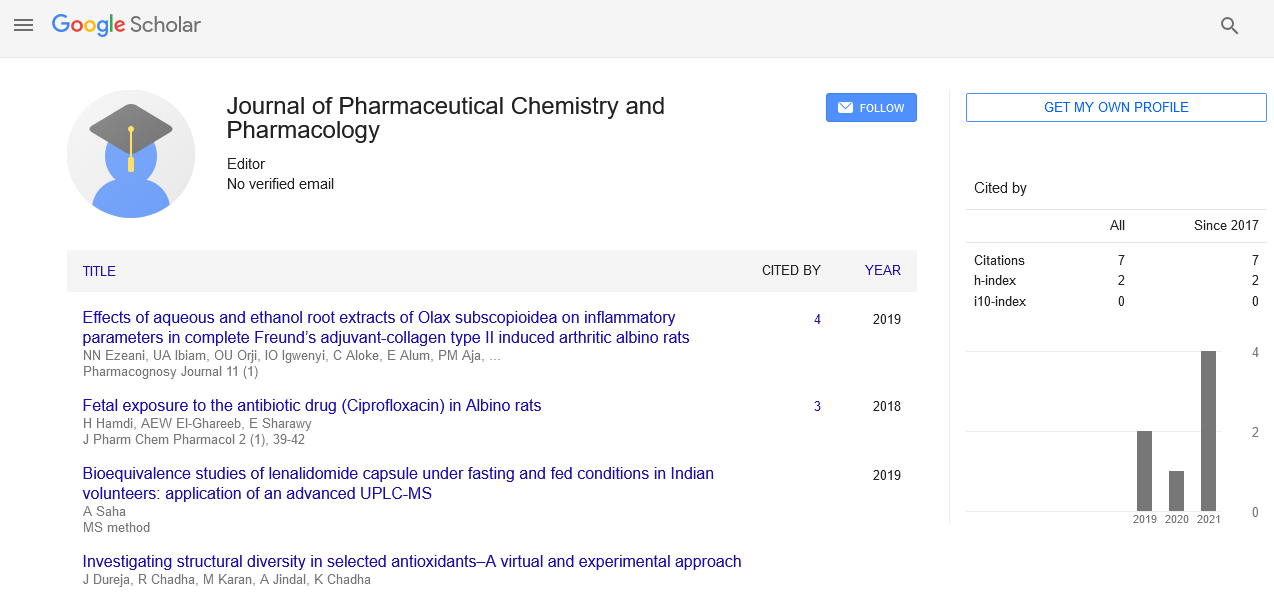Cell Viability was Measured Using the MTT Assay
Received: 02-Dec-2021 Accepted Date: Dec 16, 2021; Published: 23-Dec-2021
This open-access article is distributed under the terms of the Creative Commons Attribution Non-Commercial License (CC BY-NC) (http://creativecommons.org/licenses/by-nc/4.0/), which permits reuse, distribution and reproduction of the article, provided that the original work is properly cited and the reuse is restricted to noncommercial purposes. For commercial reuse, contact reprints@pulsus.com
Editotrial Note
This study evaluates the effect of the commonly used inhaled anesthetics isoflurane, sevoflurane, and desflurane on the viability and migration of murine 4T1 breast cancer cells, the growth, and the use of lung metastasis in a syngenetic model of spontaneous metastasis. The murine 4T1 breast cancer cells were exposed to isoflurane (2%), sevoflurane (3.6%), or desflurane (10.3%) for 3 h. Cell viability was measured using the MTT assay. The migratory capacity of 4T1 cells was assessed using a scratch assay after 24 h incubation. Female balb/c mice were subjected to orthotopic implantation of 4T1 cells under anesthesia with one of the inhaled anesthetics: 2%isoflurane, 3.6% sevoflurane, or 10.3% desflurane. Subsequently, resection of primary tumors was performed under the identical anesthetic used during implantation for 3 h. Three weeks later, the mice were euthanized to harvest lungs for ex vivo bioluminescent imaging and histological analysis. Blood was collected for serum cytokine assays by ELISA. All of the mice used in these experimental procedures were approved by the Institutional Animal Care and Use Committee (IACUC) at (917821). Balb/c mice were purchased from the Jackson Laboratory (Bar Harbor, ME United States) and maintained in accordance with federal guidelines. Mice were housed in sterilized plastic cages under pathogen-free conditions (21–25°C, 12/12 light/dark cycle). Food and water were offered ad libitum. Mice were euthanized using CO2 overdose followed by cervical dislocation to ameliorate the suffering of mice.
MURINE BREAST CANCER CELL
The murine breast cancer cell line 4T1-LUC was purchased from the American Type Culture Collection (Rockville, MD, United States) and cultured in RPMI 1640 supplemented with 10% FBS (Weene, l, United States), 100 U/ml penicillin, and 0.1 mg/ml streptomycin (Weene, l, United States) in 5% CO2 humidified atmosphere at 37°C. For the survival assay, cells were divided into a 96-well plate and incubated at 37°C for 24 h, and then treated with air (control) or one of the tested anesthetic gases in air for 3 h. Cell viability was measured using the MTT assay after 24 h incubation as previously described (Li et al., 2020). In brief, the culture medium was removed, and 100 μL MTT/medium solution(2.5 mg/ml) were added to each well and incubated for 3 h; then the medium was removed, and 100 μl aliquot of DMSO were added to each well to solubilize the formazan crystals. Absorbance was measured at 571 nm using a microplate reader (BioTek, Winooski, VT, United States). The percentage of cell viability was expressed relative to the control. The treatment with different gases was conducted in a purpose-built 1.5 L airtight gas chamber equipped with inlet and outlet valves (Iwasaki et al., 2016). All gases were delivered to the gas chamber at a rate of 1 L/min and monitored using an anesthetic analyzer (POET IQ Anesthesia Gas Monitor, criticare Systems ING) until the desired anesthetic concentrations were achieved. Then the chamber of gases was sealed and placed in an incubator at 37°C for the duration of 3 h.
The experimental gases were air (medical grade) or one of the inhaled anesthetics in air: 2% isoflurane (Baxter, Deerfield, IL, United States), 3.6% sevoflurane (Baxter, Deerfield, United States), or 10.3% desflurane (Baxter, Deerfield, United States). The concentrations of the anesthetic gases are the equivalence of 1.7 minimum alveolar concentrations (MAC) in humans. After exposure, cells were returned to the normal cell culture incubator for further study.
The 4T1 LUC cells were treated with air, 2% isoflurane, 3.6% sevoflurane, or 10.3% desflurane (n = 180 for each group). The viability (%) of 4T1 cells treated with inhaled anesthetics for 3 h and the statistical differences between groups.
There is no significant difference in the viability of the 4T1 cell among the control, isoflurane, sevoflurane, and desflurane groups (n=180 for each group, P= 0.648).





